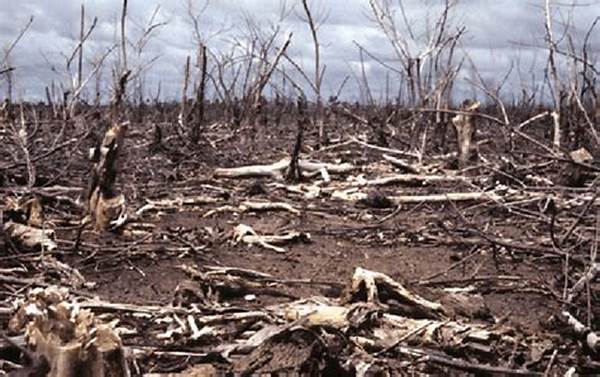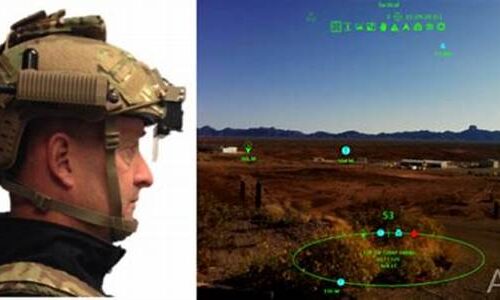The issue of environmental damage in conflict zones has gained prominence as an area of concern for both humanitarian and environmental advocates. The repercussions of armed conflicts extend beyond human casualties, affecting ecosystems and biodiversity. As conflicts spread across various regions, understanding the environmental cost becomes crucial for sustainable recovery efforts.
Causes and Consequences
Environmental damage in conflict zones comes from deliberate and collateral damage. Warfare can decimate landscapes, pollute air and water sources, and disrupt ecosystems. Deliberate actions, such as the destruction of oil facilities, can cause catastrophic spills, whereas the mere movement of troops and machinery alters the natural terrain and sometimes devastates local habitats. The consequences of such damage are long-lasting, often hampering recovery and rehabilitation efforts long after the cessation of hostilities.
Moreover, environmental damage in conflict zones affects more than just the ecological landscape. It directly impacts the livelihoods of local populations who rely on agriculture, fishing, and other natural resources. The contamination of soil and water not only poses immediate health risks but also jeopardizes food security. These environmental issues can further escalate humanitarian crises, making the recovery and rebuilding of war-torn regions a more complicated and protracted process.
In addition, the destruction caused by warfare can lead to irreversible biodiversity loss. Conflict zones often host unique ecosystems that are vulnerable to even minor disturbances. Once disrupted, these ecosystems might never fully recover, leading to the extinction of species that played critical roles in their environments. Thus, environmental damage in conflict zones represents a multifaceted challenge that necessitates an integrated approach for resolution.
Humanitarian Implications
Humanitarian efforts in regions affected by conflict often extend to addressing issues of environmental damage in conflict zones. Aid organizations must consider the environmental dimension of their interventions to ensure sustainable outcomes. Rebuilding infrastructure, for instance, should incorporate ecological restoration efforts.
Humanitarian missions must prioritize the integration of environmental considerations as a fundamental aspect of their strategy and execution. Environmental damage in conflict zones necessitates comprehensive plans that address ecological degradation while providing relief.
Post-conflict recovery is inherently linked with environmental remediation. To facilitate sustainable recovery, mechanisms for environmental rehabilitation must be included in peace agreements and reconstruction plans. Environmental damage in conflict zones continues to challenge conventional humanitarian approaches.
Neglecting environmental damage in conflict zones can result in prolonged humanitarian crises. Therefore, incorporating environmental strategies into humanitarian efforts is crucial. Integrating environmental assessments in humanitarian planning improves both short-term relief and long-term recovery outcomes for affected populations.
Organizations tasked with rebuilding conflict zones increasingly recognize the importance of addressing environmental damage. They are implementing innovative strategies designed to rejuvenate local environments while meeting the immediate needs of affected communities.
Global Responsibility and Policy Measures
Addressing environmental damage in conflict zones requires concerted global action. Policymakers need to collaborate to establish international guidelines and frameworks that prioritize the protection of the environment during and after conflicts. These measures should include sanctions against environmental destruction as a weapon of war and incentives for countries to adhere to environmental protection protocols.
Furthermore, international cooperation is vital in monitoring and assessing the extent of environmental damage in conflict zones. Utilizing satellite technology and ground assessments, the international community can gauge the damage and allocate resources more effectively. Comprehensive data collection and sharing are essential elements in crafting informed policies that address the root causes of environmental harm in these affected areas.
A multi-faceted approach involving non-governmental organizations, international bodies, and local stakeholders is vital for tackling the issue of environmental damage in conflict zones. While crafting effective strategies may be complex, they are a necessary part of ensuring that recovery is not only sustainable but also equitable. As such, concerted international efforts arm us better to face the challenges posed by environmental degradation in areas of conflict.
Remediation Strategies
Environmental damage in conflict zones calls for remediation strategies that are both innovative and culturally sensitive. Restoration projects must respect local traditions, tapping into indigenous knowledge systems that have historically sustained ecological balance. Engagement with local communities is, therefore, a critical aspect of these efforts.
Reforestation and rewilding initiatives can play a pivotal role in restoring ecological harmony. Planting native species helps rehabilitate damaged environments, while maintaining biodiversity. However, such efforts require careful planning to address the specific conditions prevalent in the conflict zones.
Holistic approaches to ecological restoration often involve the collaboration of multiple stakeholders, including the local population, government entities, and international organizations. These coalitions can pool resources and knowledge, leading to more effective and sustainable recovery efforts following conflict-induced environmental damage.
Incorporating education and training programs offers long-term benefits. Training local populations in sustainable agricultural and environmental practices enables them to rebuild their economies without further harming the environment. Thus, addressing environmental damage in conflict zones also opens up opportunities for economic advancement for affected populations.
Environmental Diplomacy
Efforts to mitigate environmental damage in conflict zones also necessitate the use of environmental diplomacy. Diplomatic interventions can encourage cooperation between warring factions, using environmental concerns as common ground for dialogue and negotiation. This approach can further peace-building processes, presenting ecological restoration as a shared interest for future stability.
Bilateral and multilateral agreements can facilitate resource-sharing responsibilities for ecological recovery post-conflict. Through such agreements, nations can work together to restore regions suffering from environmental damage in conflict zones. Collaborative diplomatic engagement is integral to moving forward on regional, national, and international planes.
Importantly, environmental diplomacy serves not only to mitigate harm but to prevent further damage. Establishing dialogue early on about environmental protections can nullify ecologically destructive strategies during wartime, preserving natural resources and habitats. Engaging in dialogue about such protections should be an early action in conflict resolution efforts.
Summary and Path Forward
In conclusion, environmental damage in conflict zones is a critical issue that affects not only ecosystems but also human societies. The devastation of natural resources compromises the resilience of affected regions, further complicating the recovery and rebuilding processes. This environmental degradation exacerbates existing humanitarian crises and poses significant challenges to attaining sustainable peace and development.
Despite the daunting nature of the task, addressing environmental damage in conflict zones is imperative to promote stability and recovery. Proactive engagement through policy-making, humanitarian actions, remediation efforts, and environmental diplomacy can offer avenues for meaningful progress. Focused strategies and international cooperation can mitigate ecological harm, fostering not only environmental recovery but also a more equitable and resilient future for societies emerging from conflict.
Implementing comprehensive and adaptive strategies ensures that environmental damage in conflict zones is addressed holistically. With coordinated efforts, leveraging global knowledge and regional expertise, solutions can be constructed that safeguard both ecosystems and human livelihoods. This path forward holds promise for mitigating the past impacts as well as preventing future ones, nurturing a more sustainable coexistence in recovering conflict zones.





